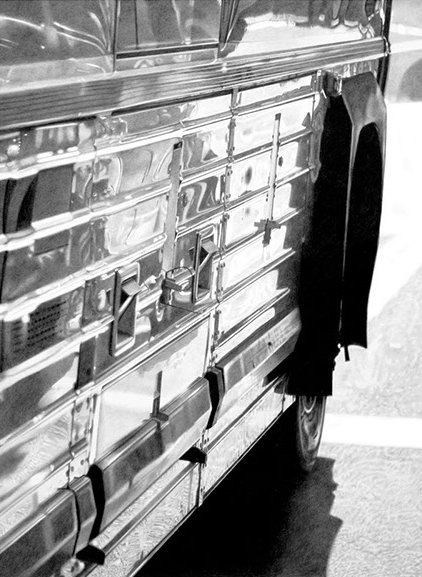Cartographers by Razdow - Paintings courtesy of F + V
{{{click to enlarge the image}}}
Charles Burchfield, an amazing American artist from the
past, once wrote: “An artist must paint not what he sees in nature, but what is
there. To do so he must invent symbols, which, if properly used, make his work
seem even more real than what is in front of him.” This echoes, to a great
extent, Arthur Dove’s belief (acquired from Henri Bergson) that an élan vital pervades nature and this can be discerned and will lead
to a greater understanding and engagement of the world than science might provide. A couple of artists at Freight and Volume –
Max Razdow and JJ Manford – follow in this American transcendentalist tradition
(Burchfield and Dove are, in fact, listed in the gallery notes as influences on
their work).
Indeed, Razdow and Manford were also, apparently,
influenced by a group of visual artists from England in the 1800s who formed a
type of fraternal society around the vision and work of William Blake. The group called itself “The Ancients” and,
like the Romantics, they looked back on what they perceived to be a better
time. Practical applications of the
scientific revolution had lead to the industrial revolution, which was altering
natural landscapes as well as relations between people. Science also meant that
nature was to be controlled and exploited for profit. Science also replaced the
‘ancient’ belief in transcendence with the belief that what was useful about nature
could be grasped with good math skills and this shell of nature would suit our
purposes just fine. The ancients believed that a union with nature was possible
and this union might even lead to greater acceptance of what underlay
perception, which would then lead to greater spiritual development. The mind
was not separate from nature but a part of nature to be influenced and changed
by nature.
In the work of both Razdow and Manford we see that a
direct attempt at a union with nature leads to the types of symbols and visions
Burchfield alluded to. Manford’s work
looks like some of the drug-induced paintings I have seen by shamans done for
western anthropologists. Yet, Manford, unlike the shaman, is not necessarily
claiming to depict a journey to a spirit
realm. This is more of a super-heightened experience that has broken through a
type of painful longing into a complete, unmitigated awareness comparable to
what Teilhard de Chardin called a universe on fire.
Manford - On the Hill
In the Romantic landscape tradition it was said that
English artists favored ‘color’ while Germans favored ‘line’ and this seems to
be a big difference between Manford and Razdow’s work. Razdow seems to be more
detail oriented and uses ‘line’ to distort perspective and to establish a
contrast with more organic forms. The
line seems a remnant of the conscious mind which becomes superseded by the
vision born of greater engagement. Razdow also seems to use those tubeworm
creatures that live at the bottom of the sea as important symbols in his
work. To me these creatures represent
sentient life at the most extreme form of survival mode. If a creature ever
should have been named after Schopenhauer, it should have been one of these sea
worms. It’s as if the deep plunge into direct and unfiltered nature leads to
our confrontation with this creature and a challenge to determine what can
elevate us above it.
Both artists, coincidentally, use the human figure in an
interesting way. I’m reminded of how
Caspar David Friedrich would use silhouettes in his landscapes to, basically,
welcome a shared experience between those inside the work and those viewing the
work. Both artists seem to do something
similar yet we are not engaging an outer landscape in their work, but a new
vision of nature and our possible transformation within it. The artists seem to assume we will engage the
world in a way to make this vision recognizable to ourselves or that we have
already done this.
Razdow -

























